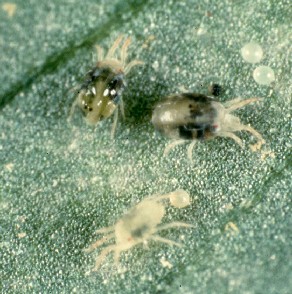
The two-spotted spider mite (Tetranychus urticae) is an important pest of raspberries grown in warm regions and under protected cultivation. The leaves of heavily infested plants become bronzed and heavily webbed leading to premature defoliation. Control has largely relied on repeated application of a range of acaricides, but withdrawal of many products and the development of acaricide-resistant mites have made effective chemical control difficult.
Mites have been successfully managed by introducing the two-spotted spider mite predator (Phytoseiulus persimilis). Naturally occurring predatory mites were more effective in managing two-spotted spider mite numbers on raspberry in Finland, Italy and Switzerland than introduced predatory mites. Provided that broad-spectrum insecticides, such as synthetic pyrethroids, are avoided, good control of the two-spotted spider mite can be achieved.
